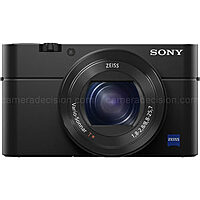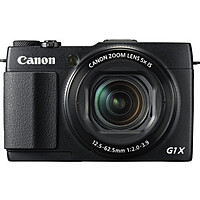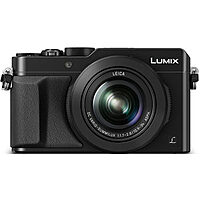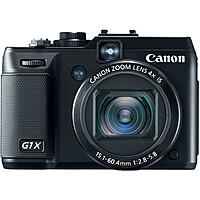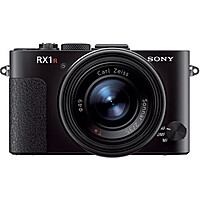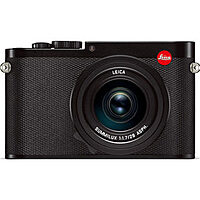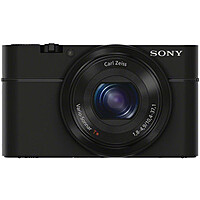Canon PowerShot G1 X Mark II with Canon PowerShot G1 X Mark III Overview
Let's compare PowerShot G1 X Mark III with PowerShot G1 X Mark II. Both cameras produced
Canon.
These models are included in the Large Sensor Compact cameras.
Canon G1 X III was released in 2017, and Canon G1 X II in 2014.
PowerShot G1 X Mark III is newer, which is a plus. PowerShot G1 X Mark II 3 years older.
However 3 years, the difference is not so bad.
The sensor resolution of PowerShot G1 X Mark III is greater than that of PowerShot G1 X Mark II. The difference of 11 MP is quite a lot.
The more megapixels the camera has, the more detailed and clear the picture will be. The number of megapixels will also affect the maximum size of the photos, which then can be printed without loss of quality.
The minimum ISO value for these cameras is the same and is .
A larger maximum ISO allows you to take good pictures in the dark.
The maximum ISO value for these cameras is the same and is .
Both cameras have Optical image stabilization.
Both cameras feature a 3-inch articulated screen.
PowerShot G1 X Mark III has electronic viewfinder, and the PowerShot G1 X Mark II doesn’t have.
Viewfinder PowerShot G1 X Mark III has a higher resolution of 2360k dots, PowerShot G1 X Mark II has a resolution of no electronic viewfinderk dots.
Burst mode, also called continuous shooting mode, sports mode or continuous high speed mode, is a shooting mode in still cameras. Canon PowerShot G1 X Mark III has 5.0 fps continuous shooting.
Canon PowerShot G1 X Mark III has 5.0 fps continuous shooting.
| General |
PowerShot G1 X Mark III |
PowerShot G1 X Mark II |
| Brand |
Canon
|
Canon
|
| Model |
PowerShot G1 X Mark III |
PowerShot G1 X Mark II |
| Announced |
October, 2017 |
February, 2014 |
| Body Type |
Large sensor compact |
Large sensor compact |
| Lens |
| Lens Mount |
fixed lens |
fixed lens |
| Manual Focus |
|
|
| Focal Lens Multiplier |
|
|
| Number of Lenses |
0 |
0 |
| Macro Focus Range |
10 |
5 |
| Screen |
| Screen Size |
3" |
3" |
| Screen Type |
Articulated |
Tilting |
| Screen Resolution |
1040k pixels |
1040k pixels |
| Touch Screen |
|
|
| Live View |
|
|
| Viewfinder |
| Viewfinder |
Electronic |
Electronic (optional) |
| Viewfinder Resolution |
2360 |
| Viewfinder Coverage |
100% |
n/a% |
| Viewfinder Magnification |
0.0 |
0.0 |
| Autofocus |
| AF Touch |
|
|
| AF Continuous |
|
|
| AF Single |
|
|
| AF Tracking |
|
|
| AF Selective |
|
|
| AF Center |
|
|
| AF Multi Area |
|
|
| AF Live View |
|
|
| AF Face Detection |
|
|
| AF Contrast Detection |
|
|
| AF Phase Detection |
|
|
| Number of Focus Points |
49 |
31 |
| Number of Cross Focus Points |
0 |
1 |
| Photography Features |
| RAW Support |
|
|
| Min Shutter Speed |
1/30 sec |
1/60 sec |
| Max Shutter Speed |
1/2000 sec |
1/4000 sec |
| Continuous Shooting |
9.0 fps |
5.0 fps |
| Shutter Priority |
|
|
| Aperture Priority |
|
|
| Manual Exposure Mode |
|
|
| Exposure Compensation |
|
|
| Custom White Balance |
|
|
| Image Stabilization |
|
|
| Built-in Flash |
|
|
| Flash Range |
9.00 |
6.80 |
| Flash Modes |
Auto, on, sl0w synchro, off |
Auto, On, Slow Synchro, Off |
| External Flash |
|
|
| AE Bracketing |
|
|
| AE Bracketing Range |
±3 EV |
±3 EV |
| WB Bracketing |
|
|
| Sensor |
| Sensor Size |
APS-C |
1.5 |
| Sensor Type |
CMOS |
CMOS |
| Sensor Dimensions |
22.3 x 14.9 mm |
18.7 x 14 mm |
| Sensor Area |
332.3 mm² |
261.8 mm² |
| Sensor Resolution |
24 MP |
13 MP |
| Max Image Resolution |
6000 x 4000 |
4160 x 3120 |
| Max Native ISO |
25600 |
12800 |
| Min Native ISO |
100 |
100 |
| Max Boosted ISO |
0 |
0 |
| Min Boosted ISO |
0 |
0 |
| Video Features |
| 4K |
|
|
| Max Video Resolution |
1920 x 1080 |
1920 x 1080 |
| Video Formats |
MPEG-4, H.264 |
MPEG-4, H.264 |
| Timelapse Recording |
|
|
| Microphone Port |
|
|
| Headphone Port |
|
|
| Exposure Modes |
| Multi-Segment |
|
|
| Average |
|
|
| Spot |
|
|
| Partial |
|
|
| AF-Area |
|
|
| Center Weighted |
|
|
| Connectivity |
| GPS |
None |
None |
| Wireless Connectivity |
Built-In |
Built-In |
| Bluetooth |
|
|
| HDMI |
|
|
| USB |
Yes |
USB 2.0 (480 Mbit/sec) |
| Battery |
| Battery Life |
200 shots |
240 shots |
| Battery Type |
Built-in |
Battery Pack |
| Battery Model |
|
NB-12L |
| Physical |
| Weight |
399 g |
553 g |
| Physical Dimensions |
115 x 78 x 51 mm |
116 x 74 x 66 mm |
| Environmental Sealing |
|
|
| Water Proof |
|
|
| Dust Proof |
|
|
| Shock Proof |
|
|
| Crush Proof |
|
|
| Freeze Proof |
|
|
| Shock Proof |
|
|
| Storage |
| Storage Type |
SD/SDHC/SDXC card (UHS-I supported) |
SD/SDHC/SDXC |
| Storage Slots |
1 |
1 |
| Other Features |
| Self Timer |
|
|
| Selfie Friendly |
|
|
Interesting Large Sensor Compact

